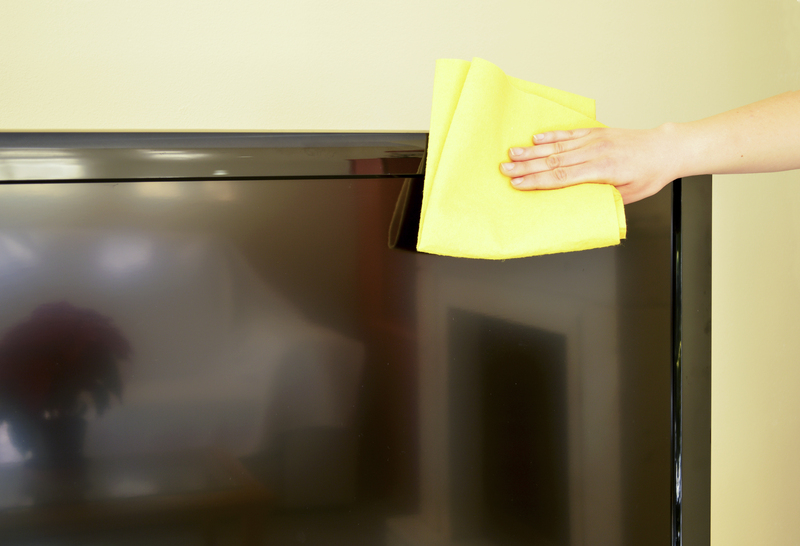Air Quality: Essential for Healthy Home Environments
Posted on 03/06/2025
Introduction to Air Quality and Healthy Home Environments
In today's modern society, indoor air quality receives increasing attention as people spend more of their lives inside homes and apartments. Ensuring a healthy home environment is not just about physical cleanliness; it also revolves around the very air we breathe. The importance of air quality cannot be overstated, as it directly impacts physical health, mental well-being, and overall comfort. This comprehensive guide explores why good air quality is essential for healthy home environments, how to evaluate it, the main pollutants to watch for, and actionable tips for improvement.

Why Is Air Quality Vital for Your Home?
It is easy to overlook what we cannot see. Yet, the quality of indoor air is a foundational component of a truly healthy home. Air quality determines how well we sleep, our ability to concentrate, and our resistance to various illnesses. When air in the home is compromised, it can lead to significant health problems for everyone, especially children, elderly individuals, and people with pre-existing health conditions.
- Allergens such as pollen, pet dander, and dust mites can trigger allergies and respiratory issues.
- Volatile Organic Compounds (VOCs) from paints, furniture, and cleaning products may lead to headaches, nausea, and chronic illnesses.
- Mold spores thrive in humid environments, causing asthma attacks, skin irritation, and even long-term lung damage.
- Radon and carbon monoxide are invisible threats that can cause severe illness or death if left unchecked.
The Sources of Indoor Air Pollutants
Understanding what affects indoor air quality is crucial for improving your home environment. Pollutants can be broadly categorized into biological, chemical, and particulate sources.
1. Biological Contaminants
- Mold & Mildew
- Bacteria & Viruses
- Pollen
- Pet Dander
Humidity, lack of ventilation, and water leaks often encourage biological pollutants such as mold and bacteria. These can have a profound impact on your home's air quality.
2. Chemical Pollutants
- Volatile Organic Compounds (VOCs) from cleaning products, furniture, carpets, and paints
- Household Pesticides and other toxic substances
- Combustion Gases from stoves, fireplaces, and heating systems
Volatile Organic Compounds, or VOCs, are a significant concern. Regular exposure, even in small amounts, can cause serious health issues. Always check for low-VOC or zero-VOC products when renovating or buying new home furnishings.
3. Particulate Matter (PM)
- Smoke (from candles, tobacco, or cooking)
- Dust and Pet Hair
- Outdoor Pollution entering through doors, windows, or poor insulation
These particles are tiny but potentially hazardous. They can embed themselves in your respiratory tract, aggravating asthma and other pulmonary conditions.
Measuring and Monitoring Air Quality at Home
For a healthier home environment, monitoring air quality should be a priority. Several modern tools and strategies are now available:
- Air Quality Monitors: Devices that detect levels of PM2.5, VOCs, humidity, temperature, and carbon dioxide/monoxide.
- Carbon Monoxide Detectors: Essential for all households, especially those using gas or wood stoves.
- Radon Test Kits: Radon is a natural radioactive gas that can seep into basements. Test kits are affordable and effective.
Many of these monitors offer real-time feedback through apps, allowing you to take swift action if levels become unsafe.
Common Signs of Poor Indoor Air Quality
You may notice the effects of low air quality through various physical and environmental signs, such as:
- Allergy flare-ups indoors but not outdoors
- Headaches, dizziness, or fatigue
- Musty or chemical odors that do not go away
- Mold growth visible on walls, ceilings, or windows
- Excessive dust accumulation even after cleaning
These signs indicate an urgent need to assess and improve your home's air quality.
The Health Effects of Poor Air Quality in Homes
Prolonged exposure to indoor air pollution can trigger or worsen many health problems:
- Respiratory Diseases such as asthma, bronchitis, and chronic obstructive pulmonary disease (COPD)
- Allergic Reactions leading to sneezing, runny nose, itchy eyes, and skin rashes
- Frequent Headaches and Fatigue
- Increased Susceptibility to Infections, as poor air weakens the immune system
- Chronic Conditions, including an increased risk of heart disease and some cancers due to long-term exposure to certain pollutants like radon or VOCs
Children, the elderly, and those with pre-existing health issues are especially vulnerable to the dangers of inadequate air quality.
Effective Ways to Improve Air Quality in Your Home
Now that you understand the significance of air quality for a healthy home, let's explore practical steps to enhance it.
Ventilation: The Key to Fresh Air
Proper ventilation helps push out stale, polluted air and bring in fresh outdoor air. Try to:
- Open windows daily, even for a short period.
- Install trickle vents or exhaust fans in kitchens, bathrooms, and laundry areas.
- Consider a whole-house ventilation system for optimal air exchange, especially in modern, airtight homes.
Controlling Humidity Levels
Keep indoor humidity between 30-50% to prevent mold and mildew growth:
- Use dehumidifiers in damp areas such as basements and bathrooms.
- Fix leaks and ensure good drainage around the home's foundation.
- Promptly dry wet carpets, walls, and flooring after spills or flooding.
Air Purifiers and Filters
Invest in a high-quality air purifier with a HEPA filter to trap particles and allergens effectively. Also:
- Replace HVAC filters every 1-3 months.
- Choose air purifiers with activated carbon filters to capture VOCs and odors.
- Regularly clean and service heating and cooling systems.
Reducing Chemical Pollutants
- Switch to non-toxic and natural cleaning products.
- Use low-VOC paints and adhesives for renovations.
- Store chemical-based products in tightly sealed containers, away from living areas.
Houseplants: Natural Air Purifiers
Certain houseplants, such as spider plants, peace lilies, and snake plants, can absorb some toxins and improve indoor air quality. Remember to avoid overwatering, as this can increase humidity and promote mold growth.
Routine Cleaning & Maintenance for Better Air
- Vacuum carpets and furniture frequently using a HEPA filter vacuum cleaner to remove dust, dander, and dust mites.
- Wash bedding, curtains, and rugs regularly in hot water.
- Dust surfaces with a damp cloth to prevent particles from becoming airborne.
- Keep clutter to a minimum to reduce dust collection areas.
Special Considerations: Children, Elderly, and Allergy Sufferers
- Children's developing lungs are sensitive to pollutants. Ensure their bedrooms are meticulously cleaned and air quality is rigorously monitored.
- Older adults are more prone to respiratory and heart issues aggravated by poor air quality.
- Allergy and asthma sufferers can benefit from air filtration and allergen-proof bedding.
The Role of Building Design and Materials
If you are renovating or constructing a new home, prioritize healthy air quality from the start:
- Opt for natural or low-emission materials (like hardwood, ceramic tile, low-VOC paint).
- Design for optimal airflow and cross-ventilation.
- Incorporate moisture-resistant finishes in kitchens and bathrooms.
Smart Home Solutions for Air Quality Management
New smart home technologies make it easier to maintain excellent indoor air quality:
- Smart thermostats and air filters can automatically adjust settings and alert you when filters need replacing.
- Networked air quality sensors offer real-time data and integration with home assistants.
- App notifications enable swift action if unhealthy pollution levels are detected.
Frequently Asked Questions About Home Air Quality
- How often should I check my home's air quality? - At least once a season, or immediately if you notice health symptoms.
- Are air purifiers worth the investment? - Yes, especially for homes with pets, allergy sufferers, or urban locations with higher pollution.
- Can I test for radon or carbon monoxide myself? - Yes, DIY test kits are widely available, but for persistent problems, consider professional inspection.
- Which houseplants are best for purifying air? - Spider plants, snake plants, peace lilies, and bamboo palms are among the top choices.

Conclusion: Making Air Quality a Home Priority
Average Americans spend more than 90% of their time indoors, making good air quality a cornerstone of wellbeing and quality of life. Paying attention to air quality, taking proactive steps to minimize sources of pollution, and investing in modern solutions empowers you to create a truly healthy home environment for yourself and your loved ones.
Remember, the air you breathe impacts your health every single day. By prioritizing indoor air quality, you're investing in the lifelong vitality of everyone under your roof.
Further Resources for Air Quality Awareness
- EPA: Indoor Air Quality
- CDC: Indoor Environmental Quality
- American Lung Association: Clean Air at Home
Stay informed and committed to improving air quality in your home--the foundation of a healthier, happier life.





